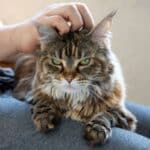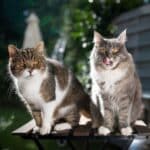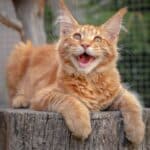Originally from the state of Maine, the Maine Coon is one of the largest breeds of domestic cats. These majestic pets stand out with their long hair and serious expression, but their grave appearance hides a fun and affectionate nature that makes them great family cats.
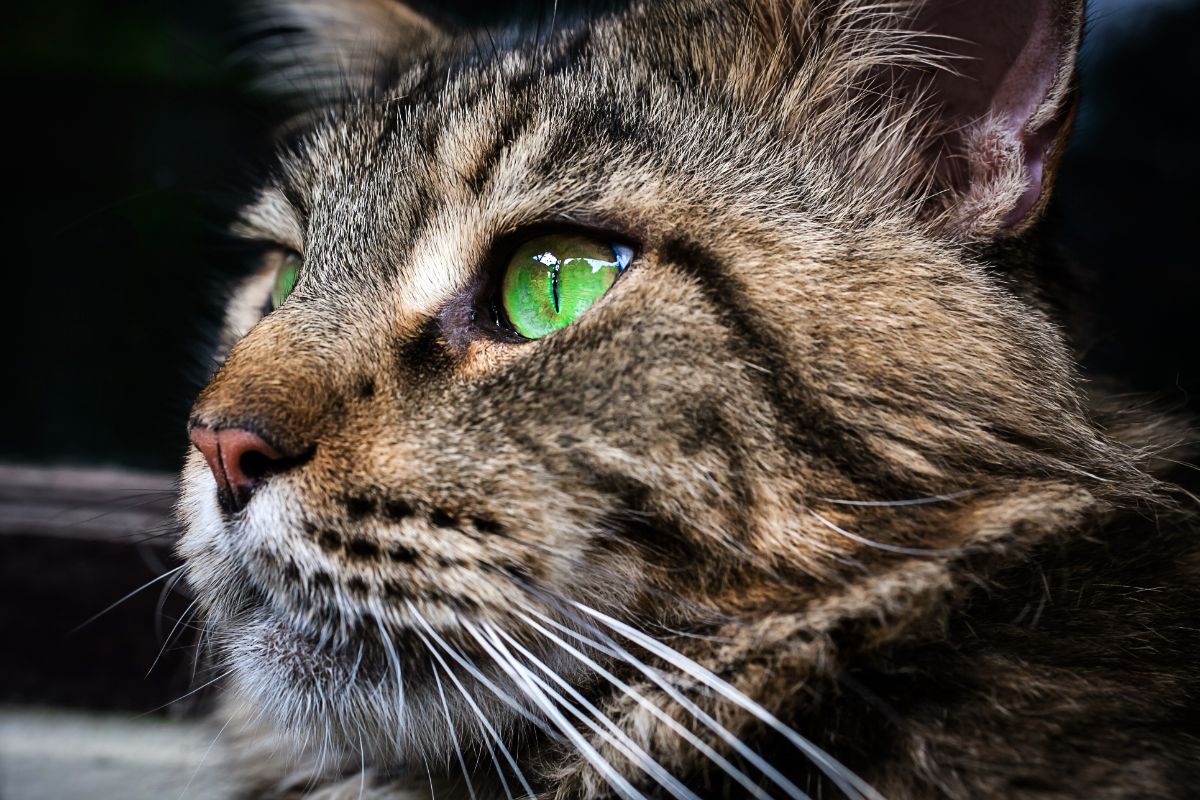
Jump to:
What Do Maine Coon Eyes Look Like?
Maine Coons have interesting eyes, and as a Maine Coon owner, you might have noticed that your cat's eyes look different from other breeds. So let's look at how Maine Coon eyes differ from normal cat eyes.
Maine Coons Have Larger Than Average Eyes
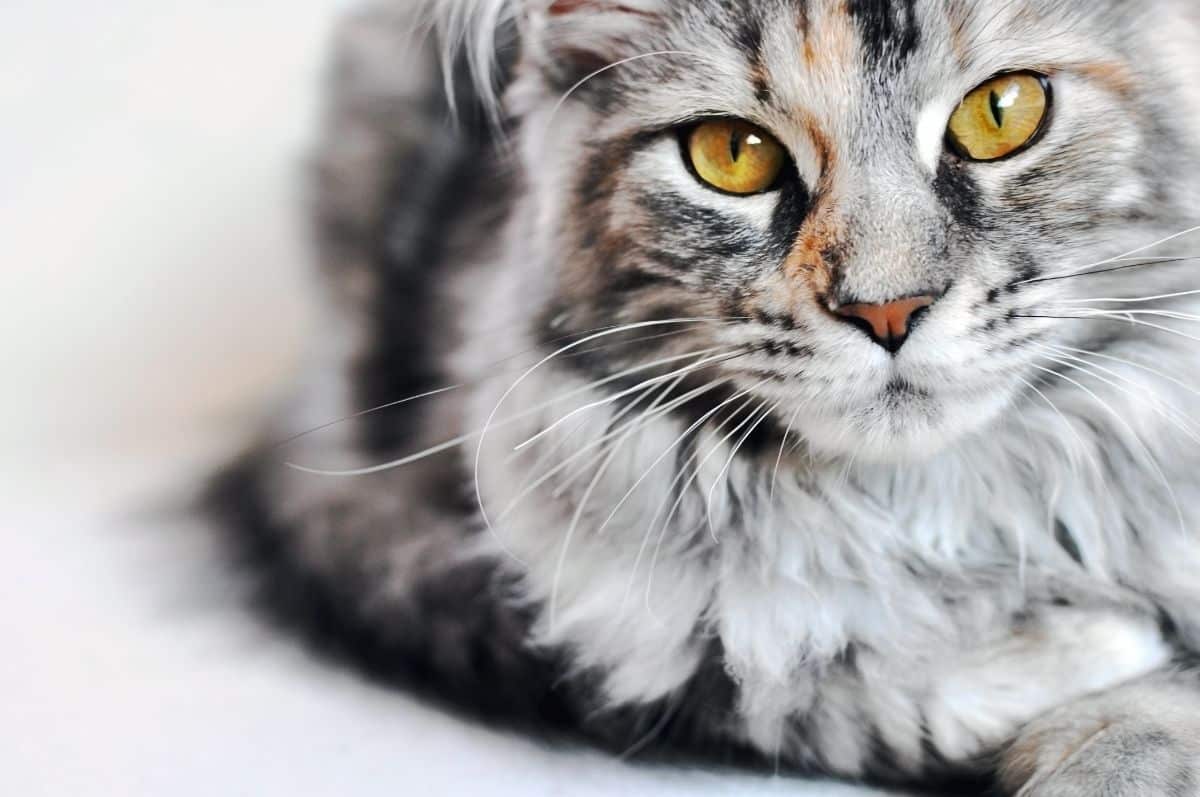
Compared to other animals, cats have eyes that look proportionally. In fact, cats have eyes that are 50% larger than humans compared to their head size.
There is a simple explanation for this unique trait. In the wild, cats had to survive by hunting and evading larger predators. Cats with large eyes had an advantage due to their excellent vision.
Cat lovers also know that these animals have the ability to see in low-light conditions. Besides having large eyes that let more light in, cats have pupils that can change size quickly to adapt to changes in lighting conditions.
You can see this phenomenon in this video. In low light conditions, cat pupils will dilate to let in more light. When brightness increases, the pupils will turn into narrow slits to protect the cat's ability to see without letting bright light blind them.
Maine Coons have eyes that can appear even larger than other cat breeds. Introduced in the 18th century, this breed is likely the result of European cats mixing with domestic American cats native to the New England area.
Due to the harshness of New England winters, cats with large eyes had better odds of catching prey and surviving long enough to reproduce. So it could explain how the Maine Coon breed ended up with larger-than-average eyes.
Maine Coon Cats Have Wide-Set Eyes
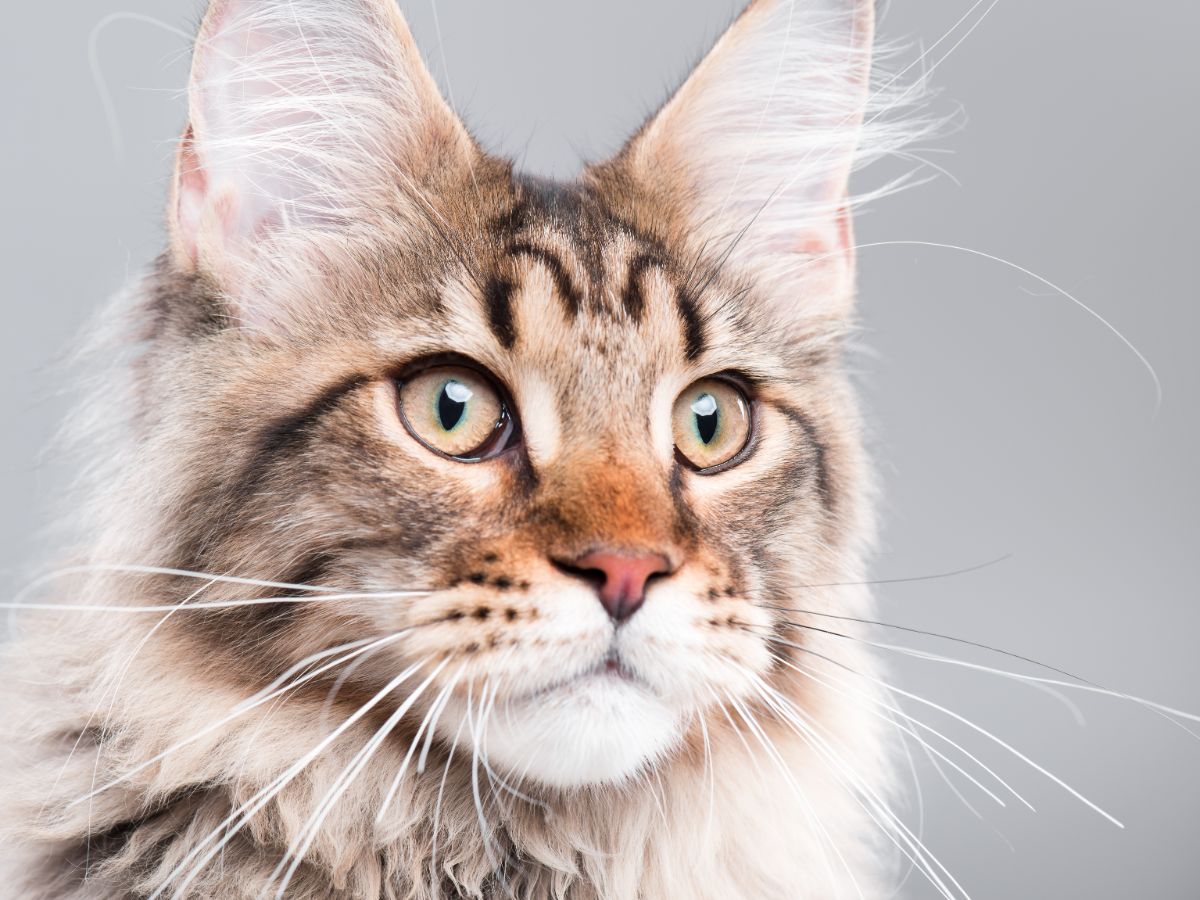
In nature, wide-set eyes result in better peripheral vision. It's a common feature in grazing animals like horses or goats since they need to keep an eye on their surroundings while eating.
On average, cats have a field of vision of around 200°. This large field of vision allows them to watch out for threats, but their eye position isn't far enough apart to create a blind spot in the front like some grazing animals have.
The eye position can vary from one cat breed to another and even from one individual to another. Maine Coon cats tend to have wide-set eyes that give them excellent peripheral vision and a slightly broader than average muzzle, contributing to their serious expression.
As a Maine Coon owner, you might find that your pet is very reactive to movements and things in the periphery of its field of vision, thanks to this unique trait.
Maine Coon Eyes Have a Slightly Oblique Shape

Maine Coons don't have oblique eyes that look as pronounced as the almond-shaped eyes of breeds like the Siamese, but these cats have a slightly oblique shape that gives them a very expressive face.
According to the Cat Fancier's Association, the slightly oblique eye shape is a breed standard for the Maine Coon. It's a desirable trait that contributes to the unique look of this breed, and Maine Coon breeders are more likely to favor cats with slightly oblique eyes.
While this trait can vary from animal to animal, it can help you tell whether your cat is a purebred Maine Coon.
With their oblique eyes and elongated faces, Maine Coons often look serious.
Most Maine Coons Have Gold or Green Eyes
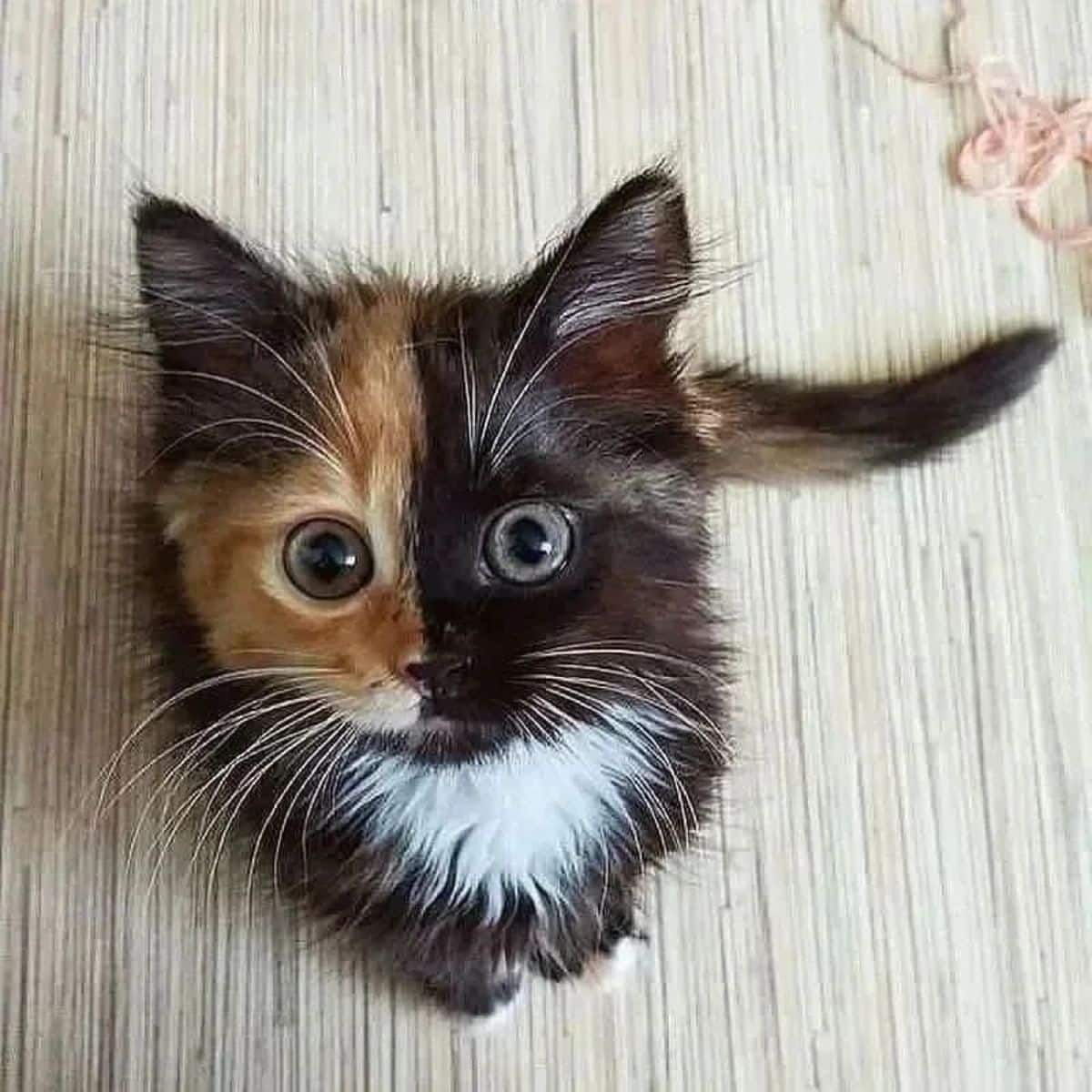
Gold and green aren't rare eye colors in cats, but these colors are more common in Maine Coons compared to other breeds.
The most common eye colors for cats include yellow and amber. Darker hazel colors are also common, but few Maine Coons have hazel eyes.
The green eye color is more common in Main Coons than other cats, and you'll also find Maine Coon cats with the rare orange eye color. It's one of the most unusual eye colors for cats, and it's not common to see it in animals that don't belong to the Maine Coon breed.
Even though yellow isn't a rare eye color, Maine Coon with yellow eyes also have copper or gold hues that give their eyes a slight metallic look. This metallic effect isn't as common in other breeds.
Like all cat breeds, Maine Coon kittens have blue eyes at birth. The pigment usually binds to the iris within four to eight weeks, revealing the cat's true eye color.
Maine Coons and Unique Eye Colors
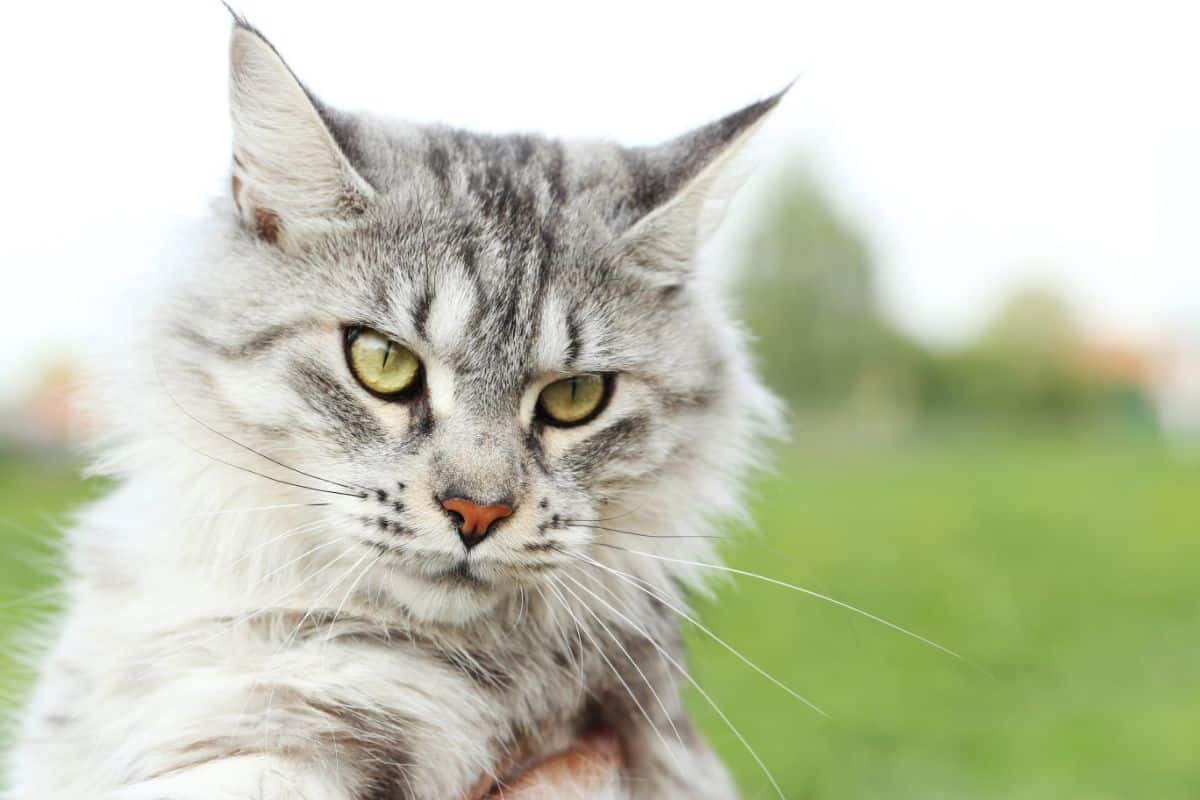
Researchers have discovered a genetic connection between white hair, blue eyes, and deafness. This unique genetic combination is somewhat common in breeds like the Turkish Van, European Shorthair, or Persian cats.
However, white hair and blue eyes remain a rare combination in Maine Coons. Blue eyes are the result of a lack of pigment in the eyes, which causes the iris to appear blue due to the way it reflects the light. Most Maine Coon cats have green, yellow, or amber eye pigments.
Heterochromia iridium, a condition where only one eye has pigment and the other appears blue, is also rare in Maine Coon cats. It's more common in British Shorthairs, Munchkins, Turkish Angoras, and other breeds.
Maine Coons and Cataracts

As a Maine Coon owner, you should know that this breed has a slightly higher risk of developing cataracts than other cats.
This eye health issue isn't as common in Maine Coons as in breeds like Himalayan, Burmese, or British Shorthair cats. However, it's more widespread than average.
Cataracts aren't a major health concern, but it's still something you should watch out for since they can reduce your pet's quality of life and even lead to blindness. Plus, cats with cataracts are more likely to injure themselves since their loss of vision can make it difficult to see obstacles.
As cats age, their eye lenses can become thicker and develop cloudiness. It reduces how much light the eyes get and makes it difficult to see.
Pets with cataracts typically need surgery. A veterinarian can remove the part of the lens that has thickened and replace it with an artificial lens to preserve your pet's vision.
Maine Coon Cats and Glaucoma
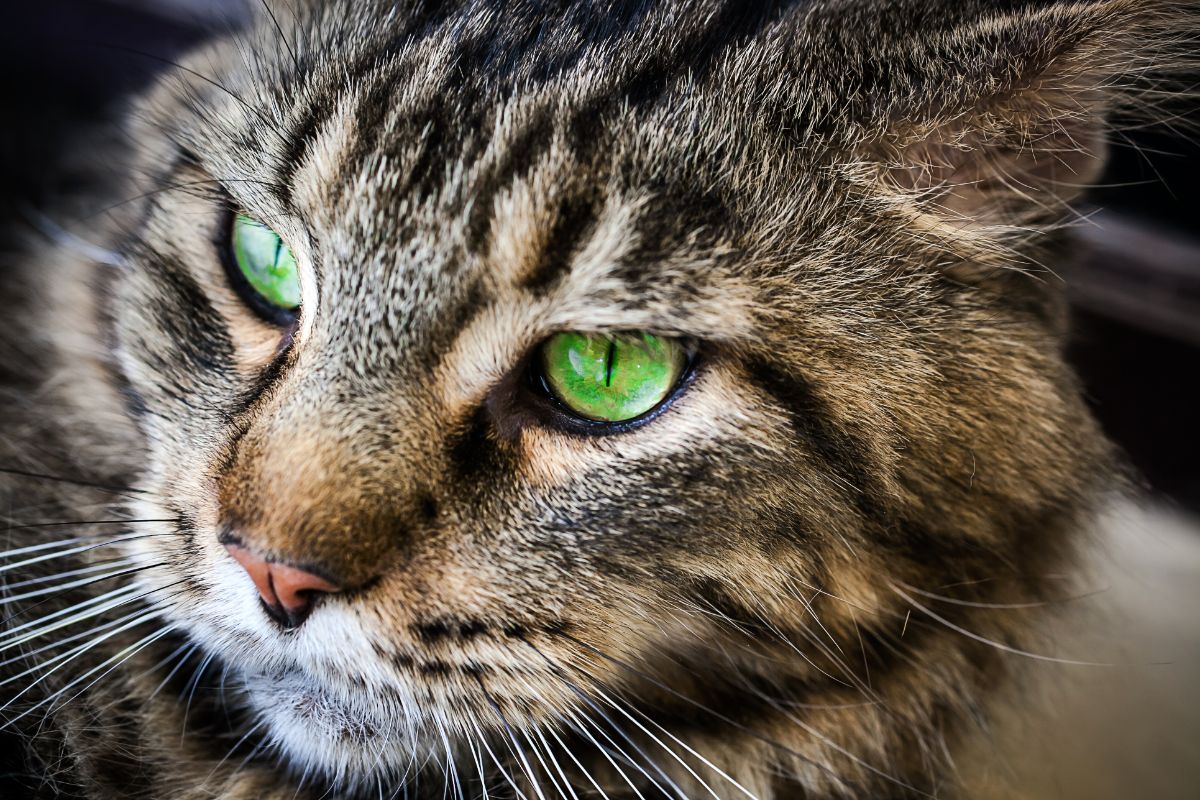
Glaucoma is another eye health condition slightly more common in Maine Coons. However, cat breeds like Burmese and Siamese cats have a much higher risk.
Cats can develop glaucoma in both eyes for genetic reasons. They can also develop secondary glaucoma, which is usually less serious and affects only one eye for unknown reasons.
Humans and animals develop glaucoma when fluid builds up behind the eye lens. As the condition progresses, the fluid causes pressure on the eye and eventually damages the optic never. It can result in blindness if not managed properly.
Unfortunately, there is no cure for glaucoma. However, it's possible to slow down the progression of the disease with medication.
Conclusion
Main Coon are beautiful and majestic creatures. These cats share some characteristics with other breeds, such as large eyes and excellent vision, but they also stand out with their slightly oblique eyes and some unusual eye colors like green or orange.

